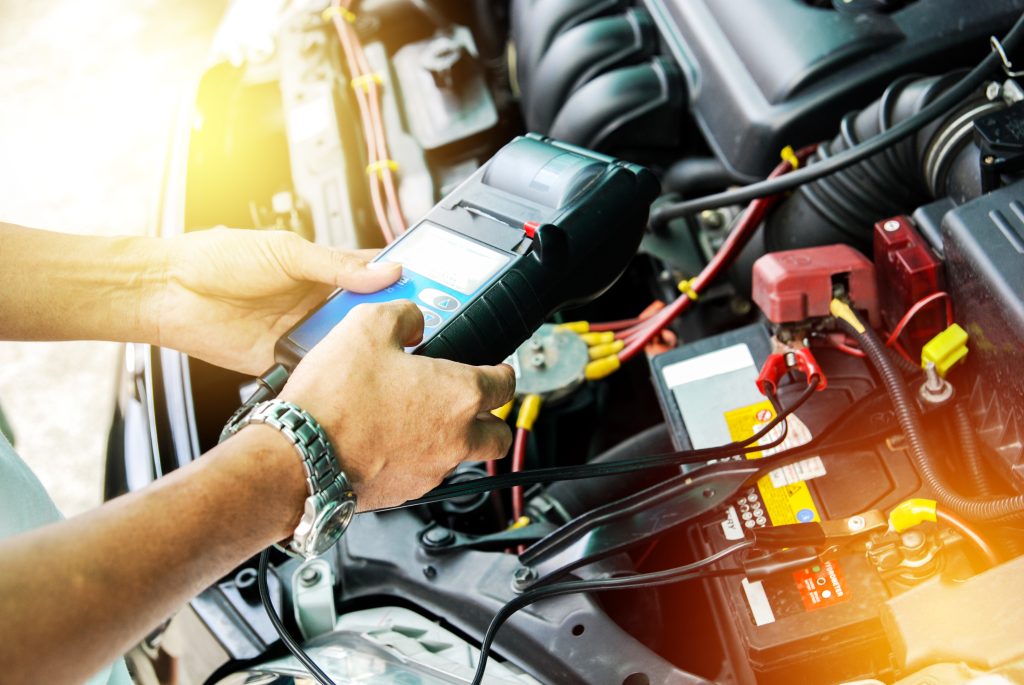Welcome to this month’s Plugged In in which we continue the journey explaining different types of storage accumulators or batteries and some of the terminology that is associated with these power sources.
Past articles have focused on the history of batteries and types of batteries.
In this article, I want to discuss what the characterisation of batteries mean and terminology such as kilowatt (kW) specific energy, specific power, and the C rating. Grasping these definitions is very important in understanding how this power source will behave in our HEV/EV.
The first rating I will discuss is battery capacity C-rate or, as it is commonly known, ampere-hour (Ah).
The battery industry uses the C-rate to scale the charge and discharge current of a battery. Physicist and engineer Charles de Coulomb developed the description of the electrostatic force of attraction and repulsion, known as Coulomb’s law, and ruled that a battery that receives a charge current of one ampere (1A) passes one coulomb (1C) of charge every second.
If a battery was rated at 100Ah and is discharged at 1 C-rate (1C), in theory it should, under ideal conditions, provide a current of 100 amperes for one hour (100Ah / 100A = 1hr). Other C-rating would look like this:
- 2C would discharge at 200 amperes for 30 minutes (100Ah / 200A = 0.5hr)
- 0.2C or C5 would discharge at 20 amperes for 5 hours (100Ah / 20A = 5hr)
- 0.5C or C2 would discharge at 50 amperes for 2 hours (100Ah / 50A = 2hr)
- 0.05C or C20 would discharge at 5 amperes for 20 hours (100Ah / 5A = 20hr)
Capacity
Using the analogy of a petrol tank, capacity is how many litres a tank can hold. A battery with a big Wh (Watt hour or energy) capacity is like a car with a big tank.
Although you can compare two battery capacities by Amp-hour (the amount of energy charge in a battery that will allow one ampere of current to flow for one hour), you can only do so if they have the same voltage. If two batteries have different voltage, using Watt-hour will be more accurate.
- A 1 Amp-hour battery can deliver 1 Amp of current power for 1 hour.
- 1 Watt-hour = Amp-hour × Voltage
- Rated Wh Capacity = Rated battery voltage × Rated Ah Capacity
- Example: 201.6 V × 6.5Ah = 1310 Wh = 1.31 kWh
Output power
The analogy here would be the speed that a car can drive. A car with a big petrol tank may drive very long distance, but it does not mean the car can drive at a very fast speed. A battery with large amps capacity may go a long distance, but it does not mean the battery can output large amps /current.
Energy
Energy stored in a battery is dependent on battery voltage and the amount of charge stored in the battery (the Wh is the SI unit for energy).
Energy (Wh) = V (voltage) × C (capacity)
Specific EnergySpecific energy of a battery is the parameter for determining the total battery capacity in weight for a given kilometre range of an EV. The SI unit for this quantity is the Watt-hour per kilogram (Wh/kg).
Specific Power = Rated Peak Power / Battery Mass in kg
Specific power, also called gravimetric power density of the battery is the peak power per unit mass. It is expressed in W/kg. This quantity is dependent on the load served by the battery and is highly variable. Specific power is the ability of the battery to supply energy. The higher the specific energy the quicker it can give and take energy.
Power Density
Power density is the peak power per unit volume of a battery – Watts/Intensity (Amps)(W/I).
Energy Density
Energy density, also referred to as volumetric density, is the nominal battery energy per unit volume – Watt hours/Amps (Wh/I)
Definition of KW and KW/h
KW/h is unit of energy equal to 3.6 megajoules (1kWh = 1kW × 3600kWs = 3600kJ = 3.6 MJ for one hour)
This means that 1 Watt second is equal to one Joule, and 1 kilowatt hour is 3.6 megajoules
- KW = one thousand Watts (Watt is equal to one Joule of energy per second)
- KW/h = using a thousand Watts for an hour (3,600,000 Joules)
- KW = Power KW defines how much energy a device uses or generates in a given amount of time.
- KW/h = Energy
KW/h defines the how much energy that device actually uses or generates.
Example: 100W light bulb on for 10 hours needs 1KW/h (1000 Watt hours).
S.O.C (state of charge)
S.O.C (state of charge) is a critical condition for battery management. Accurate gauging of S.O.C is key to the health of the battery and for its safe operation. S.O.C. can be measured by voltmeter or hydrometer.
D.O.D (depth of discharge)
D.O.D (depth of discharge) is used to indicate the percentage of total battery capacity that has been discharged.
S.O.H. (state of health) can be defined as the ratio of maximum charge capacity of an aged battery to the maximum charge capacity when the battery was new. S.O.H. is an important parameter for indicating the degree of performance degradation of a battery and for estimating the battery’s remaining lifetime.
Cycle Life (number of cycles)
Cycle life is the number of discharge–charge cycles the battery can handle at a specific D.O.D. (normally 80 per cent) before it fails to meet specific performance criteria. The actual operating life of the battery is affected by the charging and discharging rates, D.O.D., and other conditions such as temperature. The higher the D.O.D., the shorter the life cycle. To achieve a higher cycle life, a larger battery can be used for a lower D.O..D during normal operations.
Calendar Life is the expected life span of the battery under storage or periodic cycling conditions. It is related to temperature and S.O.C.
These are the main battery characterisations you will see when looking at HEV/EV battery specifications. The main ones will be C-Rate, KW (Power) and kW/H (Energy), but it is important to know what the others mean. Battery capacity is dependent on age, but batteries for HEV/EVs are continually being charged and discharged, and I find the best way to test these batteries is in the car under load by using the scanner and then printing off the results.
Thanks for reading, and in next month’s Plugged In, I will start discussing drive trains and electric motors.
Source: Motor Trader E-Magazine (November 2018)
9 Nov 2018


